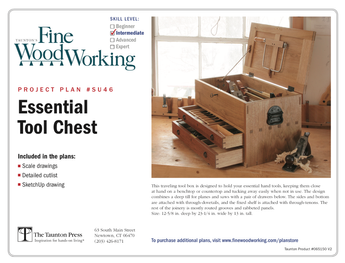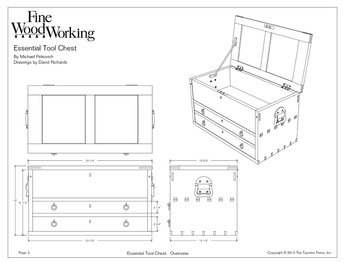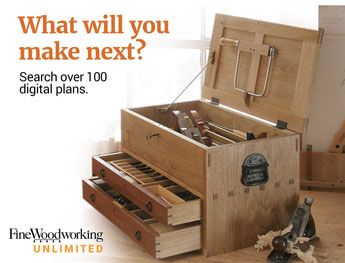I want to avoid buying a million little helpful accessories or gadgets, and also learn to use stuff properly.
I recently bought a kit of power tools, and my very next purchase will be safety glasses.
My first two (expected) projects are some garage shelving – against the wall and hung from ceiling, and eventually a bench+table for my patio. For me, I think this will be quite a challenge but want to use it as a learning experience too.
– I guess I’ll need a stud finder for the garage shelving – how do I also ensure I don’t end up drilling into wiring?
– I don’t have a workbench or sawhorses yet… I was figuring I could start off working on cuts off the ground with mitre saw and circular saw. I guess I still need SOME base/elevation going on – saw some people using cheap foam insulation for a safety cutting base?
– When I am building the vertical support bases and crossmembers for the shelving, I’ll need a level – but what size should I be going with? Or do I in fact need multiple levels?
– Similar to above – how do I ensure that my wood is being attached at proper 90 degree angles? This isn’t mission critical, but I also want to understand and learn to do it right
– If I’m making multiple same-size cuts to a 2×4 with the mitre, I’ve heard of bump stops. I imagine I could just use… the wall? Or how would I have a secure bump stop so each piece sliding through would end up same length?
– I guess I should have a proper N95 or some sort of respirator? What a year to try and get a proper mask… what should I be looking for?
– A carpenters/mechanical pencil I guess!?
– Already have tape measure 🙂
Any other basics I need to pick up to get going? I want to avoid tons of visits to home depot, outside of picking up extra lumber 🙂
 Shop Talk Live Podcast
Shop Talk Live Podcast Our favorite articles and videos
Our favorite articles and videos Fine Woodworking New England Event
Fine Woodworking New England Event











Replies
Stud finders are a bit hit and miss at times but if you get one invest in a better model. Most midgrade and better will not only more reliably locate studs but also live wires and pipes if not too deep. A "live" is one with electricity actually flowing through it at the time, so beware that wires may be present that go undetected. Houses built within the past 30 years should have metal protective plates protecting wires and pipes that pass through framing, but there may still be wires and pipes that run along the exterior of framing members.
I do recommend some type of work platform. It will not only save your kness and back but also help you work more efficiently. Bora makes 2 products I could recommend; their folding saw horses or a product thay call a Centipede both are capable of making a sturdy work surface using a couple of 2x4s and a sheet of plywood or MDF.
1½" Foam board does make an excellent saw base to breakdown sheet goods. To facilitate storage cut a 4x8 panel into 3 equal sized pieces(a sharp 6"knife does the job) 32"x48" then use packing tape to tape two of the pieces along the 48" edge to form a 64"x48" panel, now flip that panel over and tape the remaining piece in place along the 48" edge. The end result should be a 48"x96"panel that can be folded like a Z with the packing tape functioning as a hinge. When using it to make saw cuts always make sure you blade only penetrates your work piece by about ¼“.
The defacto standard in levels is 4' and if you get a quality one it can also function as a fairly reliable straight edge for cutting and marking, but for hanging shelves all you really need is something called a torpedo level, about 9" long, again quality is important to insure the level is actually calibrated properly.
Also invest in something called a speed square this will help you square up your shelves and also make a great saw guide to make quick cuts in framing lumber(I'm sure YouTube has a video showing all the ways to use a speed square to make your project better) if you are only doing home improvement the Home Center models are good enough, but if you ever thing you might want to branch out into more refined Woodworking then a higher quality tool from companies like Woodpecker will be more accurate. I also recommend you get a good combination square, Starrett is the gold standard but if you get a Home Center brand try to verify its accuracy before buying it was a known true square. Life lessen time, cheap tools are cheap for a reason, poor quality materials, poor quality control, just overall low standards. A combination square is probably one of the top 3 most used tools for most woodworkers but it is worthless if it's not accurate. While hanging shelves in the garage is not very demanding your combination square can be used for everything from calibrating tools, measuring, depth gauge, checking square, to marking cuts all of which can have a big impact on the quality of your work. Buy the best one you can afford and they aren't in the Home Center.
As for your "bump stop" I think you are referring to a flip stop. These are incredibly helpful for repetitive cuts using a Miter saw but require long auxiliary fences and top tracks(Kreg makes probably the best for this use) to be installed on your miter saw making it less portable.
Yes take it from someone who has messed up his lungs by not taking precautions regarding dust, get a good mask. Reusable masks are readily available from Woodworking suppliers like Woodcraft or Rockler, you will just look like Bane from "The Dark Knight Rises"
I prefer a 9mm mechanical pencil to a carpenters pencil for accuracy and ease of use, but that's up to you.
I have bought many stud finders but always go to a nearby outlet and one side of it is nailed to a stud. Pull a tape off of that and every 16" will be another stud assuming 16" OC. A quick knock knock test will confirm. Wire even if not protected "should" be drilled through the center of the stud. Not counting the 1/2"drywall there should be 1 1/4" of stud to run screws into so I would size your screws accordingly. I think a 2 x 4 & plywood workbench build is in your future. Maybe look up Steve Ramsey BMW "basic mobile workbench"
If the walls are sheet rock all you need is a strong magnet to look for the screws. The same magnet with a string taped to it and a small weight will give you vertical.
I like a magnet for finding studs too. Stud finders sometimes lie.
Magnets won't help if your walls are framed with wood studs, especially if drywall screws used were pre-1985. Drive a nail into the bottom plate of your wall about an inch up from the floor. If it just bounces, your studs are metal. Like SClause said, studs are drilled in the flat side for wiring so if you're careful you shouldn't hit wires.
One other thing, eventually you'll need 12" and 24" levels as well as a 4'. Just for shits 'n giggles I have a 6", too.
Mikaol
Magnets work just great on wood framed walls with drywall, fastened with either drywall nails or screws. It finds the heads of the fasteners perfectly, and thus the center of the stud. Stud finders I have tried are very vague about finding the center of a stud, and can end with a couple of misplaced fasteners to hit the right spot.
Magnets do not work very well on plaster and lathe walls. But stud finders work very poorly on those too.
Get a handful of these magnetic studfinders and leave them on the wall as good visual. Drop a pencil line down from these using a long level. Use a "story stick" to replicate your 2x4 cuts. Also, I would get a framing speedsquare and a good set of drill bits and coutersink bits. Pre-drill all the bracket holes so the screws pass cleanly through. If you are using a powered chopsaw, make sure the 90* stop is accurate before making lots of cuts.
"I want to avoid buying a million little helpful accessories or gadgets" - you so don't get woodworkers ;-)
“[Deleted]”
Also a trick I use to find studs is to turn the lights off or low and shine a flashlight across the wall to create a moonscape. Unless the drywall finisher was meticulous you should see some evidence of nail marks. I have no experience with this but it looks like you can find studs and wires with it. Sorry, I don't know how to post a clickable link but this goes to amazon.
https://www.amazon.com/Walabot-DIY-Plus-Smartphones-DY2PBCGL01/dp/B07XP94548/ref=asc_df_B07XP94548/?tag=hyprod-20&linkCode=df0&hvadid=385112208924&hvpos=&hvnetw=g&hvrand=3829596874741095851&hvpone=&hvptwo=&hvqmt=&hvdev=c&hvdvcmdl=&hvlocint=&hvlocphy=1025659&hvtargid=pla-825593617894&psc=1&tag=&ref=&adgrpid=73789135330&hvpone=&hvptwo=&hvadid=385112208924&hvpos=&hvnetw=g&hvrand=3829596874741095851&hvqmt=&hvdev=c&hvdvcmdl=&hvlocint=&hvlocphy=1025659&hvtargid=pla-825593617894
This forum post is now archived. Commenting has been disabled